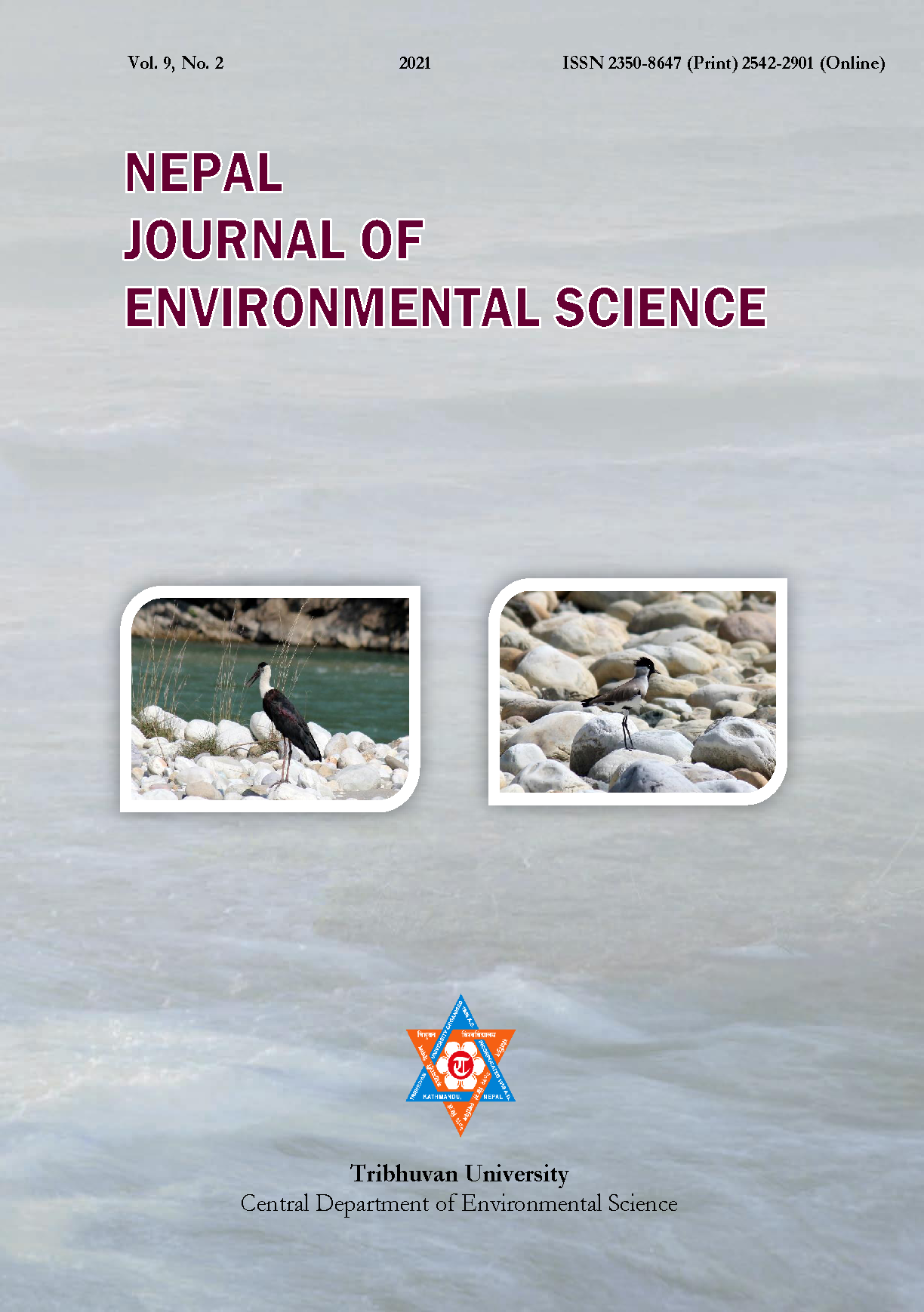High altitudinal vegetation dynamics including treeline ecotone in Langtang National Park, Nepal
DOI:
https://doi.org/10.3126/njes.v9i2.36605Keywords:
Langtang National Park, NDVI, treeline ecotone, vegetation greennessAbstract
Identification of high altitudinal vegetation dynamics using remote sensing is important because of the complex topography and environment in the Himalayas. Langtang National Park is the first Himalayan park in Nepal representing the best area to study vegetation change in the central Himalaya region because of the high altitudinal gradient and relatively less disturbed region. This study aimed at mapping vegetation in Langtang National Park and its treeline ecotone using Moderate Resolution Imaging Spectroradiometer (MODIS), Normalized Difference Vegetation Index (NDVI). Two treeline sites with an altitude of 3927 and 3802 meters above sea level (masl) were selected, and species density was measured during the field survey. The linear slope for each pixel and the Mann Kendall test to measure significant trends were used. The results showed that NDVI has significantly increased at the rate of 0.002 yr-1 in Langtang National Park and 0.003 yr-1 in treeline ecotone during 2000-2017. The average 68.73% equivalents to 1463 km2 of Langtang National Park are covered by vegetation. At the same time, 16.45% equivalents to 350.43 km2 are greening, and 0.25%, i.e., 5.43 km2 are found browning. In treeline ecotone, the vegetation is mostly occupied by grasses, shrublands and small trees where the NDVI was found from 0.1 to 0.5. The relative changes of NDVI in barren lands are negative and vegetative lands above 0.5 NDVI are positive between 2000 and 2017. The dominant treeline vegetation were Abies spectabilis, Rhododendron campanulatum, Betula utilis and Sorbus microphyla, with the vegetation density of 839.28 and 775 individuals per hectare in sites A and B, respectively. The higher average NDVI values, significantly increased NDVI, and higher density of vegetation in both A and B sites indicate that the vegetation in treeline ecotone is obtaining a good environment in the Himalayas of Nepal.
Downloads
Downloads
Published
How to Cite
Issue
Section
License
Copyright (c) 2021 Central Department of Environmental Science, Tribhuvan University

This work is licensed under a Creative Commons Attribution-NonCommercial 4.0 International License.
This license enables reusers to distribute, remix, adapt, and build upon the material in any medium or format for noncommercial purposes only, and only so long as attribution is given to the creator.

